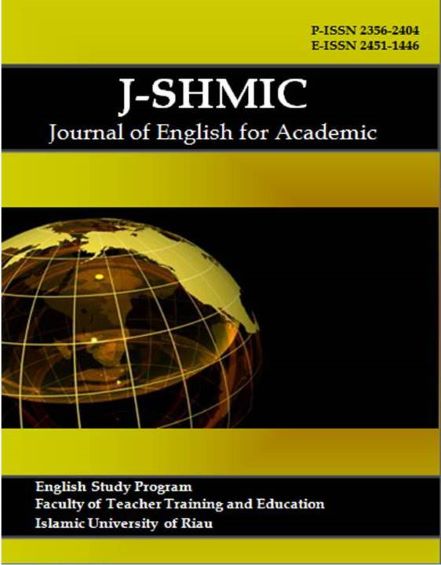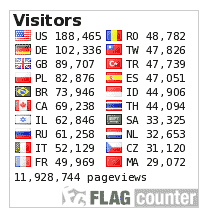The Effectiveness of SOLE on EFL Learning for Vocational Students in Indonesia
Keywords:
Effectiveness; SOLE; EFLAbstract
Improving education in the 4.0 era needs to be adjusted to the teaching and learning in higher education. Thus, it is necessary to have a learning strategy that prioritizes student independence in learning by using facilities in the digital era such as the internet. Therefore, SOLE can be one of the strategies that are in accordance with this 4.0 education. The purpose of this study was to find out the effectiveness of SOLE for apprentices in English as a Foreign Language (EFL) classrooms. In this study, we used quasi-experimental studies conducted through pre-test and post-test on study subjects as primary data for the study. The analysis showed a significant difference between students taught using SOLE and conventional methods in English proficiency. The Wilcoxon test results prove that the two-sided asymptotic significance of the Wilcoxon test is 0.000 for experimental class, and 0.000 for control class which the Asymptotic significance 2-tailed below Alpha (0.05). It means that SOLE can be more effective than lecturing.
Downloads
References
Al, Z. (2019). The influence of Self-Organized Learning Environments (SOLEs) on EFL students in a college in Oman. Journal of Information Technologies and Lifelong Learning.
Al Zakwani, M. H. (2020). Enhancing Omani EFL learning environments: a participatory action research study into the application and development of an appropriate SOLE pedagogy. Doctoral dissertation.
Álvarez, F. P. (2021). Implementación de la metodología Self Organized Learning Environments (SOLE). Tecnología Educativa Revista CONAIC, 8(1), 50–53.
Amit, S. (2020). Investigating The Effect Of Self-Organized Learning Environment) In Higher Education To Improve Students’learning, Educational Inspiration, And Commitment In E–Course. Journal of Entrepreneurship and Business Resilience, 3(1), 28–40.
Arikunto, S. (2016). Prosedur Penelitian Suatu Pendekatan Praktik. Jakarta: Rineka Cipt.
Chaka, C. (2020). Skills, Competencies and Literacies Attributed to 4IR/Industry 4.0: Scoping Review. IFLA J CrossRef, 46, 369–399.
Diva, I. E. (2022). Students’ Perceptions of Learning Platform: The Advantages and Disadvantages of Quipper School. J-SHMIC: Journal of English for Academic, 9(1), 42–50.
Du, Y. (2020). Electronic Devices as a Resource for Getting ‘On-Task’and Deepening Group Knowledge: A Multimodal Conversation Analytic Investigation of a Self-Organized Learning Environment at a UK Universit. Newcastle University.
Etfita, F. (2019). Students’Perspective on the Use of Edmodo as an Assessment Tool. SHMIC: Journal of English for Academic, 6(1), 18–25.
Garcia, M. B. (2021). Cooperative learning in computer programming: A quasi-experimental evaluation of Jigsaw teaching strategy with novice programmers. Education and Information Technologies, 26(4), 4839–4856.
Goma, E. I. (2021). Analisis Distribusi dan Interpretasi Data Penduduk Usia Produktif Indonesia Tahun 2020. Jurnal Georafflesia: Artikel Ilmiah Pendidikan, 6(1), 20.
Inamdar, P. a. (2007). Hole-In-The-Wall’ computer Kiosks foster mathematics achievement - A comparative study. Journal of Educational Technology & Society, 10, 170–179.
Juárez, E. D. (2022). A Framework for Self-Organized Learning Environments to Develop Soft Skills in Geographically Distributed and Multicultural Engineering Teams. IEEE Global Engineering Education Conference (EDUCON), 508–512.
Karim, S. A. (2021). Utilizing test items analysis to examine the level of difficulty and discriminating power in a teacher-made test. EduLite Journal of English Education, Literature, and Culture, 6(2), 256–269.
Mahamid, M. I. (2022). The Level of Self-Organized Learning among Middle East University Students in Jordan. 131–118.
Mitra, S. (2005). Self organising systems for mass computer literacy : Findings from the ‘ hole in the wall ’ experiments. International Journal of Development Issues, 4, 71–81.
Mitra, S. (2021). Beyond the Hole in the Wall. Discover the power of self-organised learning. TED Books.
Mitra, S. D. (2005). Acquisition of computing literacy on shared public computers: Children and the" hole in the wall". Australasian Journal of Educational Technology, 21(3).
Mitra, S. K. (2016). Learning at the edge of chaos: Self-organising systems in education. He Palgrave International Handbook of Alternative Education, 227–239.
Mitra, S. T. (2003). Improving English pronunciation: An automated instructional approach. Information Technologies & International Development, 1(1), 75.
Mustangin, M. (2020). Analisis Proses Perencanaan Program Pendidikan Nonformal bagi Anak Jalanan di Klinik Jalanan Samarinda. Pepatudzu : Media Pendidikan Dan Sosial Kemasyarakatan, 16(1), 1.
Novika, S. (2022). Improving Student Learning Outcomes on Gravity Material by Using Self-Organized Learning Environment Model. Electronic Research Journal of Social Sciences and Humanities, 4(IV), 23–28.
Pérez González, L. I.-M. (2022). Components of Education 4.0 in 21st century skills frameworks: systematic review. Sustainability, 14(3), 1493.
Pratama, O. R. (2022). Development Of A Learning Module Using The Self Organized Learning Environment (Sole) Model With Augmented Reality Assistance On The Materials Of Rotation Dynamics And Equality Of Rigid Bodies. IJOEM: Indonesian Journal of E-Learning and Multimedia, 1(1), 1–11.
Saptadi, S. (2020). Peran Instruktur Dalam Layanan Pembelajaran Peserta Kursus Mengemudimobil Roda Empat di LKP Cendana Samarinda. Learning Society: Jurnal CSR, Pendidikan Dan Pemberdayaan Masyarakat, 1(2), 28–34.
Suryaningsi, S. (2021). Good Citizen: the Responsibility of Teachers To Shape the Character of Man 1 Samarinda Students During the Covid-19 Pandemic. Jurnal Cakrawala Ilmiah, 1(2), 117–124.
Suwandi, M. S. (2021). Implementation Of The Self Organized Learning Environment (Sole) Model In An Effort To Increase Creativity In Learning Outcomes In Class Viii C Civics Learning At Smp Negeri 28 Samarinda. Unmul Civic Education Journal, 4(1), 60–67.
Widiastri, D. A. (2020). Program Pelatihan Sebagai Upaya Pemberdayaan Korban Pasca Rehabilitasi Penyalahgunaan Narkoba di Rumah Damping Borneo BNN RI Samarinda. Learning Society: Jurnal CSR, Pendidikan Dan Pemberdayaan Masyarakat, 1(1), 12–23
Published
How to Cite
Issue
Section
This is an open-access article distributed under the terms of the Creative Commons Attribution-ShareAlike 4.0 International License which permits unrestricted use, distribution, and reproduction in any medium. Users are allowed to read, download, copy, distribute, search, or link to full-text articles in this journal without asking by giving appropriate credit, providing a link to the license, and indicating if changes were made. All of the remixes, transform, or build upon the material must distribute the contributions under the same license as the original.











